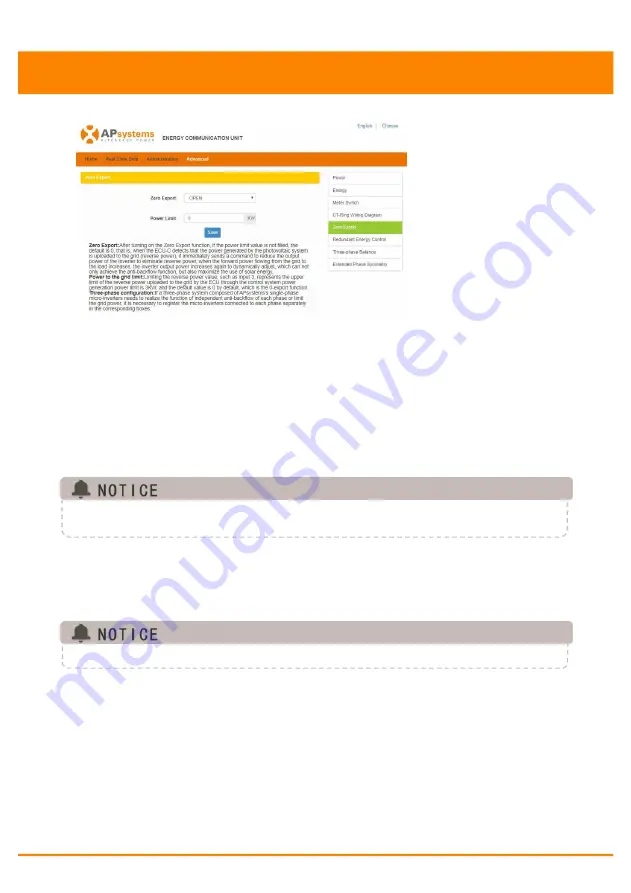
ECU-C Installation/User Manual
38
6.Local Network Interface
e) zero export
Figure 22
The zero export function could limit the power export to the grid. Users
could set the maximum export power when the zero export function is
turned on.
After turning on the Zero Export function, if the power limit value is not
filled, the default is 0, that is, when the ECU-C detects that the power
generated by the photovoltaic system is uploaded to the grid (reverse
power), it immediately sends a command to reduce the output power of the
inverter to eliminate reverse power, when the forward power flowing from
the grid to the load increases, the inverter output power increases again to
dynamically adjust, which can not only achieve the anti-backflow function,
but also maximize the use of solar energy.
Only for single phase and three phase grid application, not for
Americas split phase.
f) Redundant energy control
The redundant energy function enables excess energy produced by the PV
system to be directed towards some dedicated electrical equipment by
activating a relay. When the excess energy is more than the set threshold,
ECU-C will close the relay.
Only for single phase grid application.
g) Three-phase balance
Three Phase Balance function could limit the current between each phase
less than 16A. User needs to click the "three phase configure" button to bind
the inverters into corresponding phase.
h) Extended Phase Symmetry
When using APsystems single-phase micro-inverse to form a three-phase
system, if one phase's AC breaker is tripped or swtiched off, the inverters on
this phase will shutdown, and then the inverters on the other 2 phases also
will be turned off, until the AC breaker is turned on, all the inverters will start
again.







































